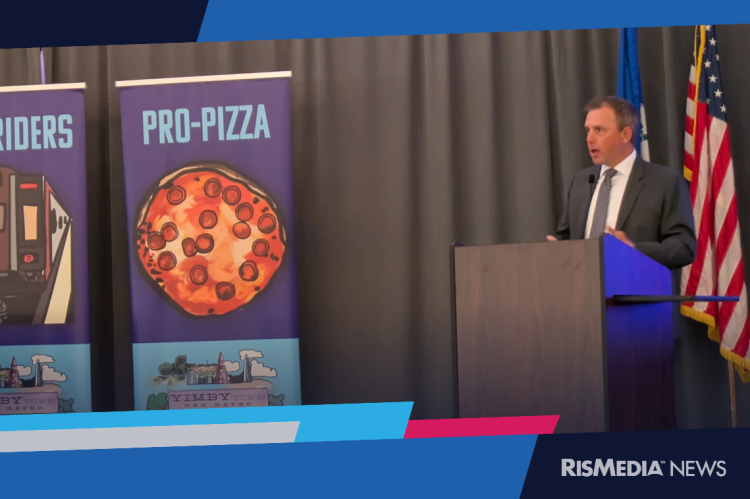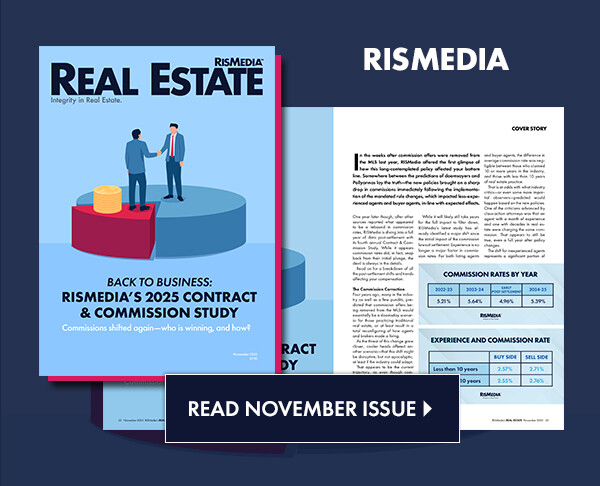Above, Kelly Armstrong
NEW HAVEN, CT—The self-described deeply conservative governor of a ruby-red Midwest state travels to an enclave of the liberal coastal elite. Speaking to an audience full of left-leaning activists and policy wonks, he receives numerous enthusiastic rounds of applause.
What was the hot-button topic that bridged our current hyper-strained political environment?
Answer: housing.
At the annual YMBYtown pro-homes conference last week, North Dakota Governor Kelly Armstrong opened his keynote by noting tongue-in-cheek that his state has “a lot of similarities” to the Connecticut coastline city of New Haven.
But the sentiment was sincere, as Armstrong went on to urge nonprofit leaders, housing economists, builders, grassroots activists and local lawmakers from all over the country to understand how the current housing crisis creates opportunities for bipartisan reform in every type of geography and political landscape.
“The issues in North Dakota are the same issues in New Haven, in Connecticut,” he said. “Doesn’t matter if it’s roofing, doesn’t matter if it’s electrical, doesn’t matter if it’s any of the things. We can’t build this stuff (housing) if we don’t find the right people and the right policies to get it done.”
Across the country (and in Washington, D.C.), the housing crisis—characterized by massively unaffordable housing stock and a lack of inventory—has seemingly created some rare areas of bipartisan agreement, even as Americans have moved further away from each other on other key issues. Blue and red states have both sought to ban or limit institutional investors, rolled back regulations and enacted more inclusive land reform laws, often shifting from traditional party platforms.
Even amidst the gridlock in Congress, a couple federal housing-related bills have received bipartisan support.
Armstrong highlighted these types of positive developments, noting that cities in North Dakota have pushed forward with traditionally liberal priorities including subsidized housing and socialized childcare, even when there wasn’t “a bleeding heart among them.”
“There’s no such thing as moderates anymore. Bipartisanship isn’t a moderate Republican and a moderate Democrat working together,” he said. “You get somebody from the right, somebody from the left that says, ‘We have to figure out a way to do this better.’ And if you don’t look at it from that way, then you’re never going to get it done.”
All of this creates opportunities for those involved in housing to help their communities grow, and build the kinds of partnerships that have the power to address important questions and emerging issues, from regulation to finance.
Maybe most applicable to real estate practitioners was discussion of narratives. Armstrong said that politicians understand that policy discussions get immediately tuned out by most people.
“Permitting reform, high density versus mixed use versus whatever—like all of that, you all care about it. You’re passionate about it, but you have to figure out how to give a message that resonates with the people in your community,” he said.
For those who want to be on the right side of housing reform in their own towns and states, Armstrong said the key is to be local, empathetic and practical.
“Find a compelling emotional hook why their community needs it. Because there’s always a reason to say no to everything,” he said. “You got to tell them why it matters, how it matters, and how this is going to help their community grow. It’s going to help every single person from the richest person in the community to the poorest person in the community—to grow in a responsible and reasonable way.”
The types of communities that want to grow—and see their housing markets thrive—need to harness these narratives, Armstrong said, and stay focused on how to make people’s lives better.
Local to local
Armstrong referenced a series of zoning reforms enacted in neighboring Montana (dubbed “the Montana Miracle” by YIMBYS), which saw a major overhaul of land use laws and zoning incentives, which saw unprecedented bipartisan support.
Since housing policy is still largely determined at the local level, the YIMBYtown conference—which touts itself as the largest “pro-homes” organization in the country—largely focuses on sharing ideas across regions. Armstrong also specifically focused on just how different every state and jurisdiction is, but urged the audience to see these as opportunities to find innovative or unique solutions to housing problems.
North Dakota is the only state with a state-run bank, Armstrong noted—the type of socialism that usually doesn’t fly in red states. But that allows North Dakota to build more affordable housing, because the bank can carry the mortgage of a house that doesn’t appraise.
Bridging the gap between a viable project and an affordable project is one of the universal challenges in the current environment, Armstrong claimed, as home prices and construction costs push even the lowest end projects out of reach for many.
“How do you fill that gap is a policy question that has to be asked in each local government in a way that each local government is probably going to figure out what their own solution to that is,” he said.
Facing opposition is part of that. Armstrong noted that nearly every issue, initiative or project gets pushback. A lot of it is on social media, with Armstrong telling the audience that eventually, you have to get out of that world.
“Turn off your notifications on social media. Nobody’s changed somebody’s mind on the 35th comment of (a social media post),” he said.
Armstrong wrapped up by harping on one of the truisms of real estate—the power of local. While many people try to blame the federal government, Armstrong said, it is the local experts who have the ability to solve housing issues.
“Locals are way better at being creative. You can find creative solutions if you recognize the difference, if you have the political courage and the policy courage to do it in a different way,” he said.












